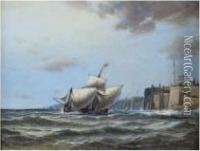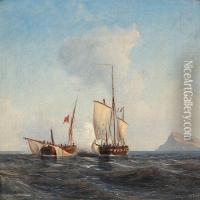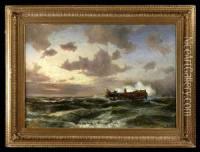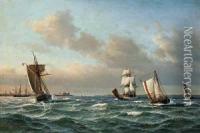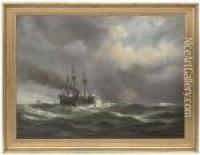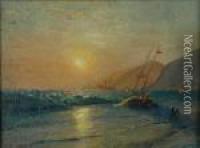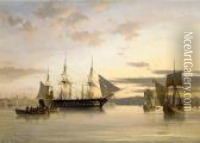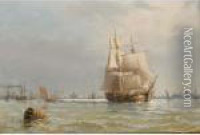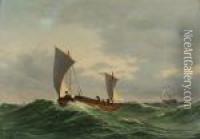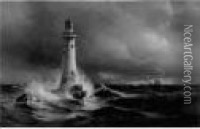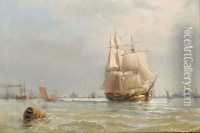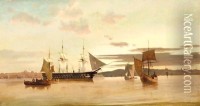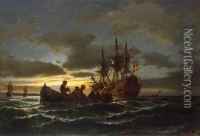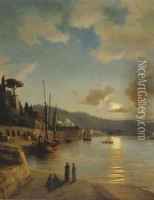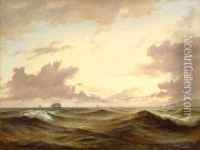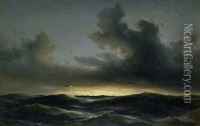Anton Melbye Paintings
Anton Melbye, also known as Daniel Herman Anton Melbye, was a Danish painter who specialized in maritime scenes. Born on February 13, 1818, in Copenhagen, Denmark, Melbye was among a group of painters known as the 'Golden Age of Danish Painting,' a period that produced a remarkable number of highly skilled artists in Denmark.
Melbye’s interest in the sea and ships was evident from an early age, which is reflected in his extensive body of work featuring marine subjects. He was initially trained by his older brother Vilhelm Melbye, also a marine painter, and later joined the Royal Danish Academy of Fine Arts where he studied from 1838 to 1841. His talent was recognized early on, and he was much influenced by the contemporary demand for marine painting in Denmark, which was due in part to the country’s historical engagement with naval trade and exploration.
In his early career, Melbye’s works were characterized by dramatic lighting and meticulous detail, capturing the power and majesty of the sea. He often depicted ships in distress or in the midst of a storm, showing a mastery over the representation of seascapes and the effects of weather on the ocean.
Melbye left Denmark in 1847 and moved to Paris, where he became associated with the Barbizon school, a group of artists working in the Barbizon village who advocated for realism in landscape painting and inspired the impressionist movement. Although Melbye’s style differed, his work during this period began to show a greater emphasis on atmosphere and light, which aligned with the Barbizon school's focus on the natural environment.
Throughout his career, Melbye traveled extensively, which influenced the diversity of marine subjects he depicted. His travels took him to locations such as the Mediterranean, the Black Sea, and the North Atlantic, and he often incorporated the local characteristics of these waters into his work.
Anton Melbye had a successful career with international recognition, exhibiting his works in Paris, London, and other European cities. He was also appointed as a court painter to the King of Denmark. Melbye’s legacy includes not only his paintings but also his influence on other artists, both in Denmark and abroad. His brother Fritz Melbye was also a painter who followed in his footsteps, and the two often collaborated.
Anton Melbye passed away on January 10, 1875, in Paris, France. His works continue to be celebrated for their contribution to marine art and the broader panorama of 19th-century European painting.
